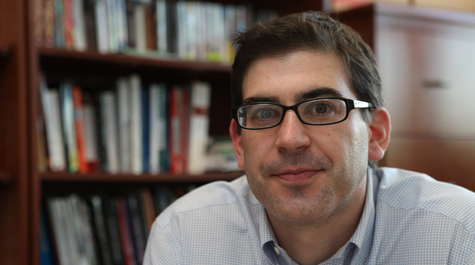Classroom politics: A new way to teach kids about controversial issues
At a time when political feuds take place on Twitter and candidates use campaign-sponsored Snapchat filters to soil an opponent’s image, the digital-savvy iGeneration (those typically born from the late 90s onward) is more exposed to political controversy than ever—and many of them are too young to even vote. But high exposure alone doesn’t always incite political engagement. And Jeremy Stoddard, associate professor of education and associated faculty of film and media studies at William & Mary, is out to change that.
“In the early 1900s, public schools basically stripped most controversy out of their curriculums because they didn’t want it to be seen as indoctrinating,” said Stoddard. “Because of that, government curriculums have become almost anti-political, focusing more on things like structures of government rather than the actual issues. But I believe one of the primary purposes of universal public education is to create informed citizens. Currently, I don’t think we’re doing a very good job of that.”
This past spring, Stoddard tested out a new project that aims to solve that problem by teaching kids about controversial issues and the ways in which media can be used to persuade people on these issues. He first became interested in the ways in which young people learn about politics as a middle school teacher. While he found that family was a significant source of information, he also realized that political messages in the media—from public figures, campaign ads and the like—were as much a factor.
“I wondered how they were making sense of all of that—were they doing anything to critique the messages they heard in the media, and were they engaging with one another on these issues?” said Stoddard.
The short answer? Not enough. Making use of an online simulation model developed by David Shaffer and his Epistemic Games Group at the University of Wisconsin - Madison, he placed government students at a Hampton Roads-area high school in the role of interns charged with creating a political campaign supporting or opposing a state-level political issue.
The system, which was designed to simulate real-world work environments in STEM careers, was adapted by Stoddard to mimic the setting of a strategic communications firm called PurpleState Solutions. The intention is to educate students on important political issues, the campaign process, and the ways in which different forms of media are strategically used to target certain demographics or locations.
“Part of our goal is for the students to learn these skills in case they want to become involved in campaigning someday, but another part is just making them more aware as active citizens of how and when someone is trying to persuade them of something,” he said.
For the pilot project, Stoddard chose to focus on a fictional, state-level proposal to ban fracking, largely because it’s a controversial issue with strong evidence on both sides of the spectrum, and particularly relevant in the state of Virginia.
“It makes sense for this area because George Washington National Forest is technically open for exploration, and West Virginia is a heavy fracking area, so it’s not out of the question that this could be on the ballot at some point in the future,” said Stoddard.
Stoddard divided the class of 28 students, most of whom knew nothing or very little about the issue prior, into groups working on campaigns for pro- and anti-fracking special interest groups—with names like Clean Water and New Energy—and provided them with materials such as polling data, a budget, and a list of persuasive techniques and media buying costs from around the state. The students were tasked with researching both sides of the issue, conducting a media audit to determine their target demographic and which politicians or media outlets they could use to support their message. The final project was a proposal for a campaign that they then “pitched” in a Powerpoint presentation.
“It was interesting to see what the different strategies were,” said Stoddard. “We had written it in a way that there wouldn’t be one correct answer. We wanted it to be a problem for which there were multiple paths they could choose.”
Throughout the program, students conducted and recorded all of their work through the online system, which allowed them to chat with classmates and receive virtual guidance from a small team of doctoral students from the curriculum & educational technology program and undergraduates from the government department and secondary social studies education program who acted as mentors. This summer, Stoddard is using the data collected and student feedback to analyze and improve the system for use in the fall on a larger scale. While his upcoming simulation will focus on fracking, he hopes in the future to adapt the system for different controversial issues, such as healthcare or environmental policy, and potentially even political candidates.
“At the end of this, we want kids to be more aware as political beings and more likely to become active citizens when they go out there in the world,” he said. “Another big goal is just to teach them that different people are going to disagree with them on certain issues, and that’s ok. You can reasonably disagree with someone and still be friends with them. Modeling that kind of civic behavior is important.”
